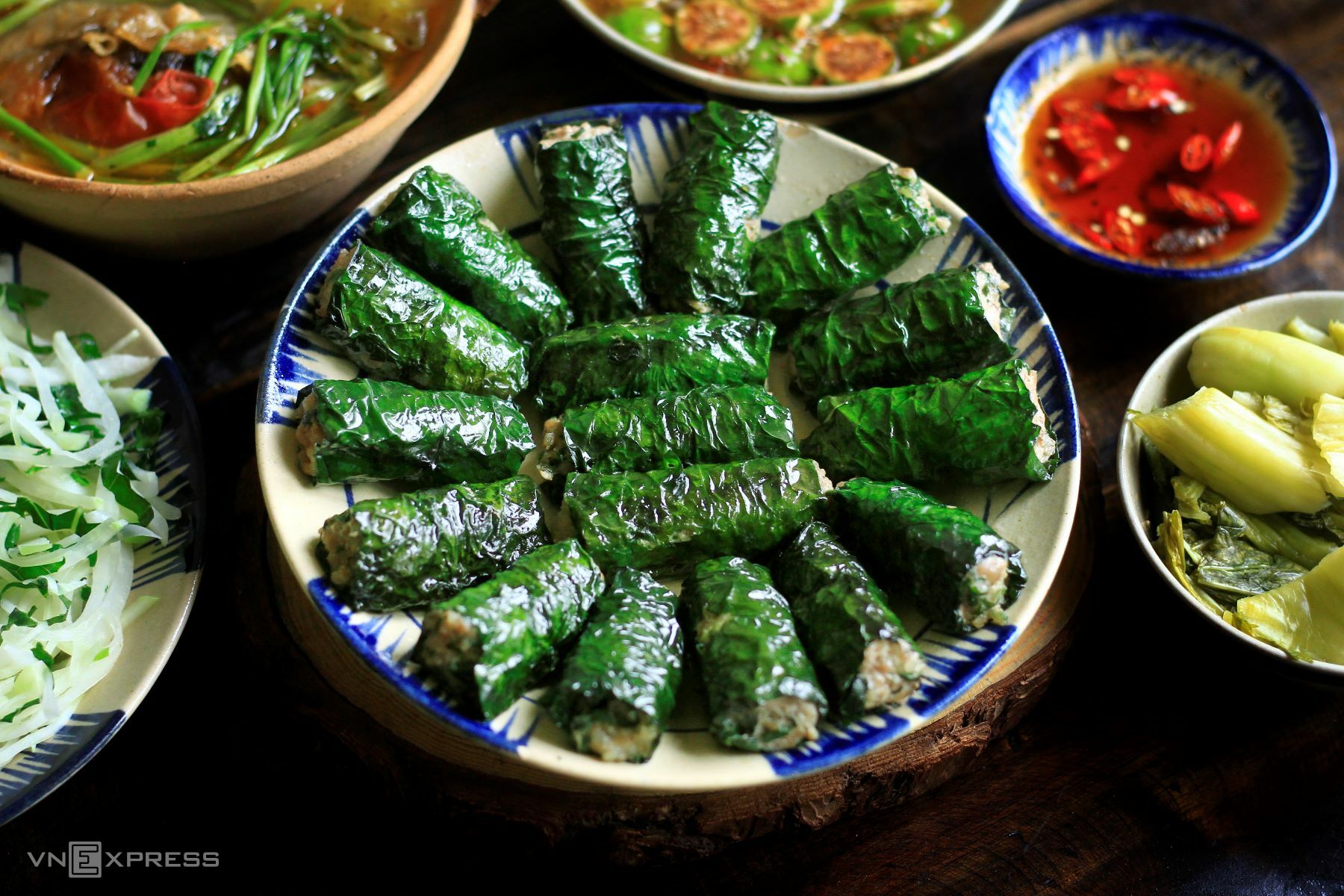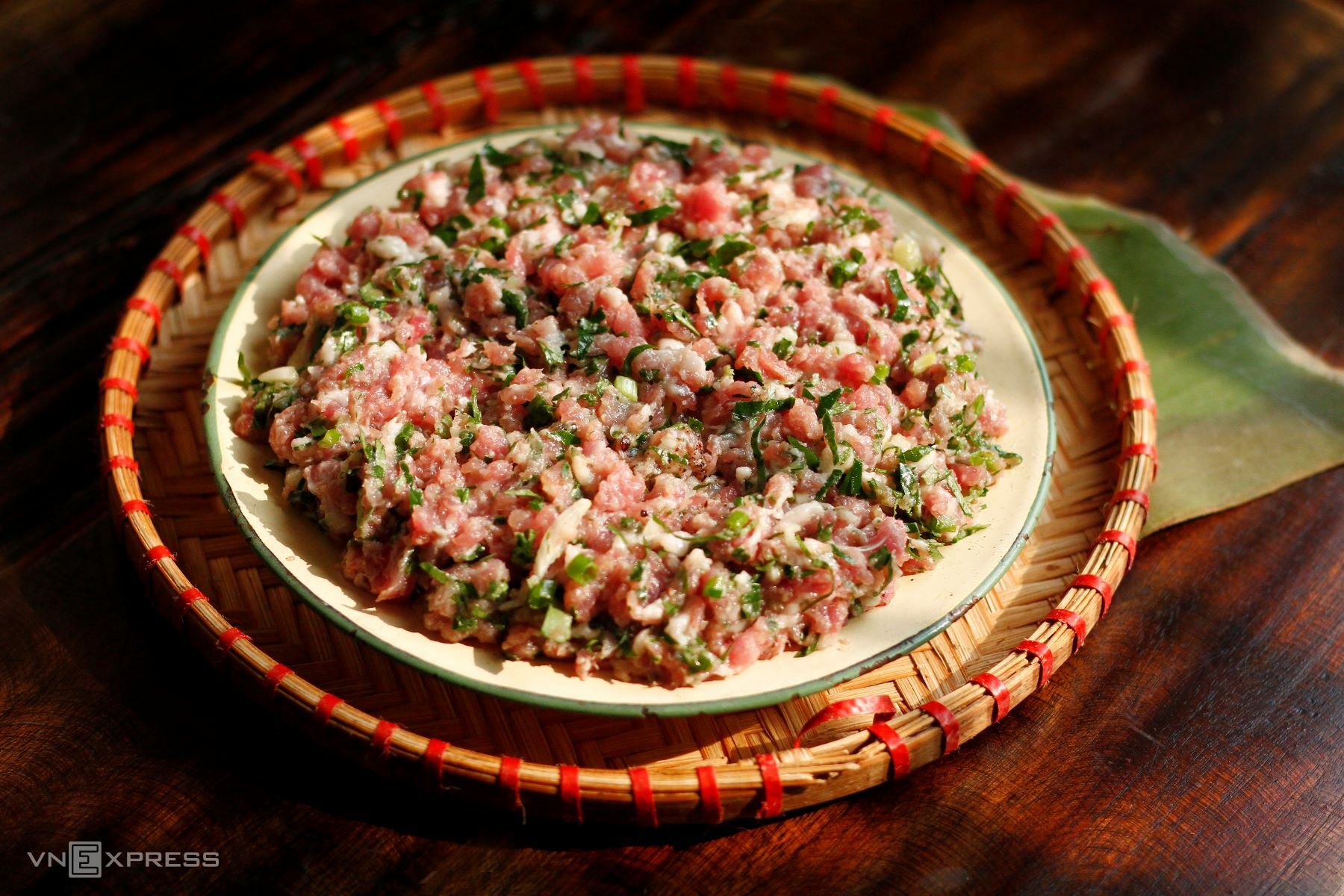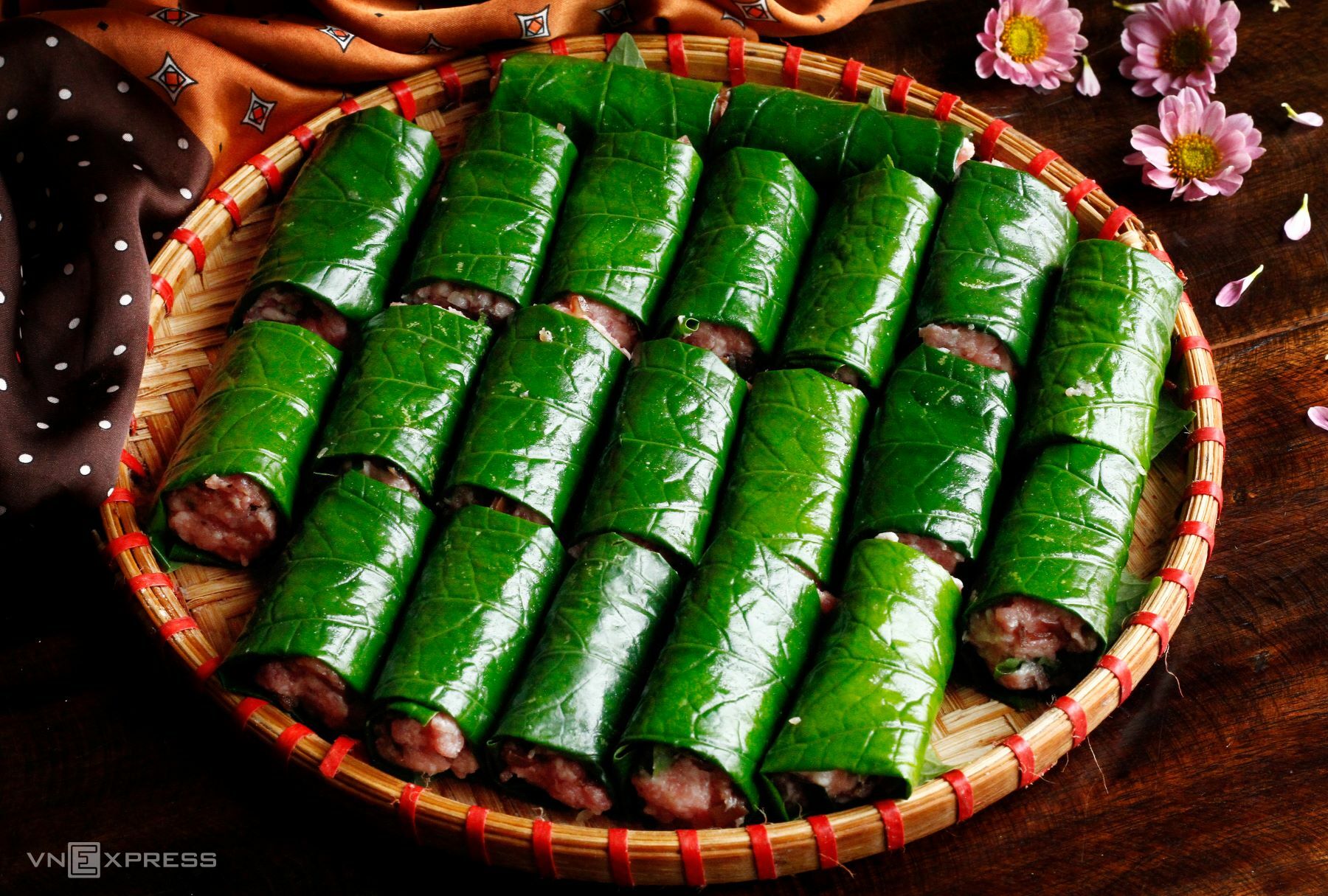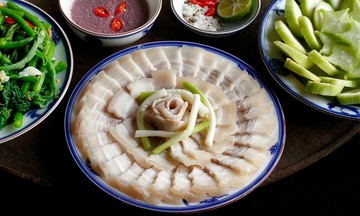Piper lolot leaves are rich in chlorophyll. When exposed to hot oil above 150°C, chlorophyll molecules readily transform into pheophytin, causing the leaves to turn dull green or brownish-yellow. This is the same phenomenon that occurs when vegetables are boiled for too long, causing them to lose their color.
Moreover, the leaf surface quickly loses moisture when exposed to high heat and boiling oil, causing the cell structure to break down and making it difficult to maintain the green color. If the oil is too hot, exceeding the chlorophyll's tolerance threshold, the leaves will quickly burn.
Another reason why Piper lolot leaves darken after frying is oxidation. The leaves contain phenolic compounds and the enzyme polyphenol oxidase. When exposed to heat and oxygen, these substances react, creating brown-black pigments. This is also the culprit that causes the leaf surface to darken, dry out, and become tough if not fried carefully. Excessively high temperatures can accelerate this process, but they are not the only cause.
 |
Piper lolot rolls retain their vibrant green color after frying, enhancing the dish's appeal. Photo: Bui Thuy |
Here are the secrets to frying delicious Piper lolot rolls.
First, selecting the right leaves is crucial. Choose mature, but not overly so, leaves with a moderate thickness and a deep green color. These are easier to roll and retain their color better when heated.
Experienced cooks often soak the leaves in diluted saltwater or rice water for a few minutes to clean and soften them. This mildly alkaline environment can partially inhibit the activity of oxidizing enzymes, helping the leaves retain their color during frying.
Some modern chefs suggest soaking the leaves in a diluted baking soda solution to enhance color retention, but this method requires careful consideration to avoid compromising the natural flavor.
After soaking, the leaves should be thoroughly dried with a clean cloth, as any remaining water will cause the oil to splatter during frying and make the leaves wrinkle and lose their color.
 |
The filling also plays a role in preserving the green color of the Piper lolot leaves during frying. Photo: Bui Thuy |
The filling also contributes to maintaining the vibrant green color. Excessively lean meat will make the rolls dry and the leaves shrivel; too much fat will make the dish greasy and cause the fat to leak out during frying, discoloring the leaves. The ideal ratio is 7 parts lean meat to 3 parts fat, often using soft shoulder or pork belly.
A filling with the right moisture content will help the steam from the meat keep the leaves soft during frying, preventing them from burning too quickly. Traditional seasonings include fish sauce, salt, pepper, and chopped Piper lolot leaves for added flavor. Depending on regional preferences, wood ear mushrooms or glass noodles can be added for texture and a richer taste. The filling should marinate for at least 15 minutes before rolling to allow the flavors to meld.
When rolling, a helpful tip is to place the shiny side of the leaf facing outwards. This not only enhances the appearance but also helps prevent the leaves from wrinkling when heated. The rough side should be inwards, holding the filling securely. Roll firmly, but not too tightly, to allow the filling space to cook evenly. Avoid rolling too loosely, as this can cause the leaves to come apart. The edges of the leaves should be placed face down in the pan during frying to help them maintain their shape.
 |
When rolling, place the shiny side of the Piper lolot leaf facing outwards. Photo: Bui Thuy |
The frying process is crucial. The oil temperature should be medium, about halfway up the roll. If the oil is too hot, the chlorophyll in the leaves will quickly break down, causing them to burn before the filling is cooked. If the oil is too cool, the extended frying time will cause the leaves to lose their color.
The ideal approach is to heat the oil to the right temperature, add the rolls, and flip them once the underside is set. During frying, lower the heat and cover the pan for about a minute to allow the heat to circulate and cook the filling evenly. Then, uncover, increase the heat to medium, and crisp the outside of the rolls. This prevents burning and helps retain the green color.
According to traditional medicine, Piper lolot leaves have a warm nature, a slightly spicy taste, and belong to the wood element; pork has a neutral nature and belongs to the water element. When combined, the dish harmonizes flavors and balances yin and yang. The green of the leaves symbolizes wood, blending with the golden brown of the filling, which represents earth, creating a harmonious balance within the five elements.
Ancient Vietnamese people not only valued flavor but also incorporated wellness concepts into their cuisine: eating Piper lolot rolls is believed to warm the stomach, dispel cold, and is especially suitable for damp or transitional weather. This balance is also the reason why this rustic dish has been preserved through generations.
Piper lolot rolls are best enjoyed fresh from the pan, with a crispy exterior and a steaming hot, fragrant filling. They can be served with white rice, fresh vermicelli noodles, or wrapped in fresh herbs, dipped in sweet and sour fish sauce with garlic and chili or fermented fish sauce.
Bui Thuy












